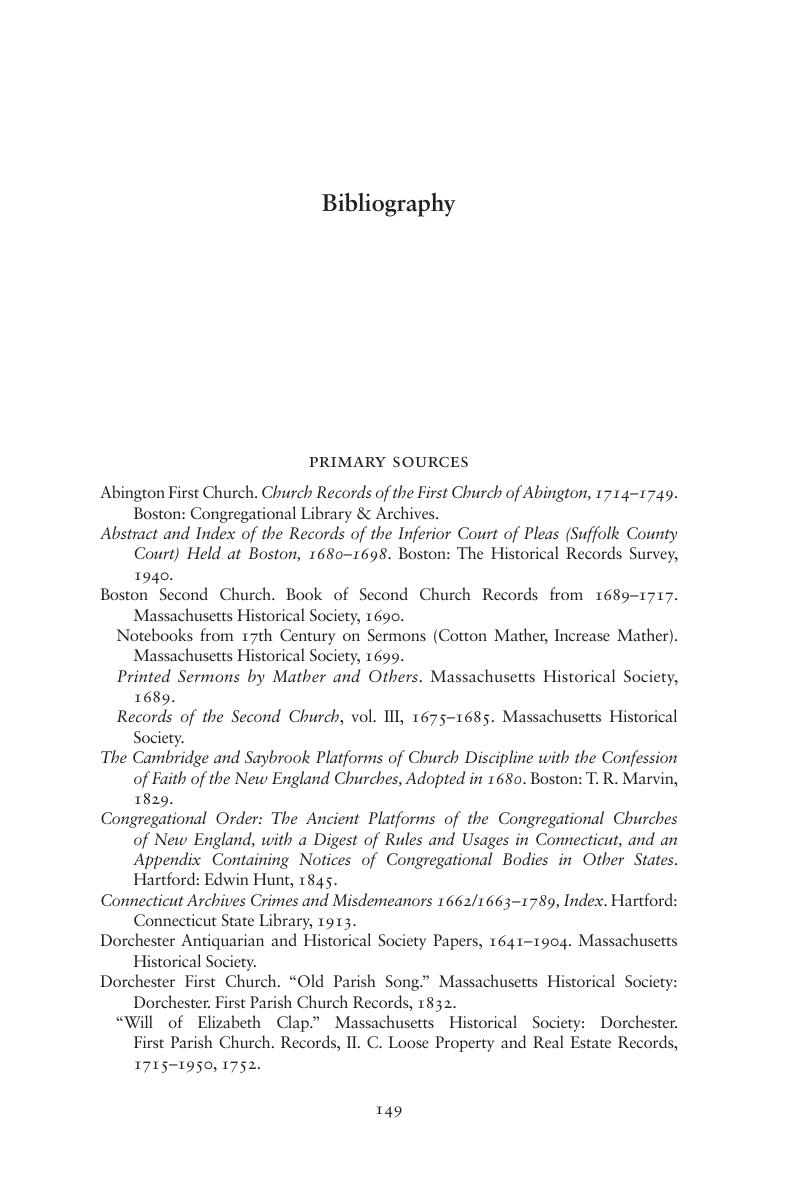Book contents
- Puritans Behaving Badly
- Puritans Behaving Badly
- Copyright page
- Dedication
- Contents
- Figures
- Tables
- Acknowledgments
- Introduction
- 1 The Great Hen Squabble and Regulating the Godly Path
- 2 Drunkards and Fornicators on Meeting House Hill
- 3 “Wicked Tongues and Wayward Behavior”
- 4 A “Blubbering” War Hero and the Middle Ground of Masculinity
- 5 “Unquiet Frame of Spirit”
- Conclusion
- Bibliography
- Index
- References
Bibliography
Published online by Cambridge University Press: 02 May 2020
- Puritans Behaving Badly
- Puritans Behaving Badly
- Copyright page
- Dedication
- Contents
- Figures
- Tables
- Acknowledgments
- Introduction
- 1 The Great Hen Squabble and Regulating the Godly Path
- 2 Drunkards and Fornicators on Meeting House Hill
- 3 “Wicked Tongues and Wayward Behavior”
- 4 A “Blubbering” War Hero and the Middle Ground of Masculinity
- 5 “Unquiet Frame of Spirit”
- Conclusion
- Bibliography
- Index
- References
Summary

- Type
- Chapter
- Information
- Puritans Behaving BadlyGender, Punishment, and Religion in Early America, pp. 149 - 172Publisher: Cambridge University PressPrint publication year: 2020



